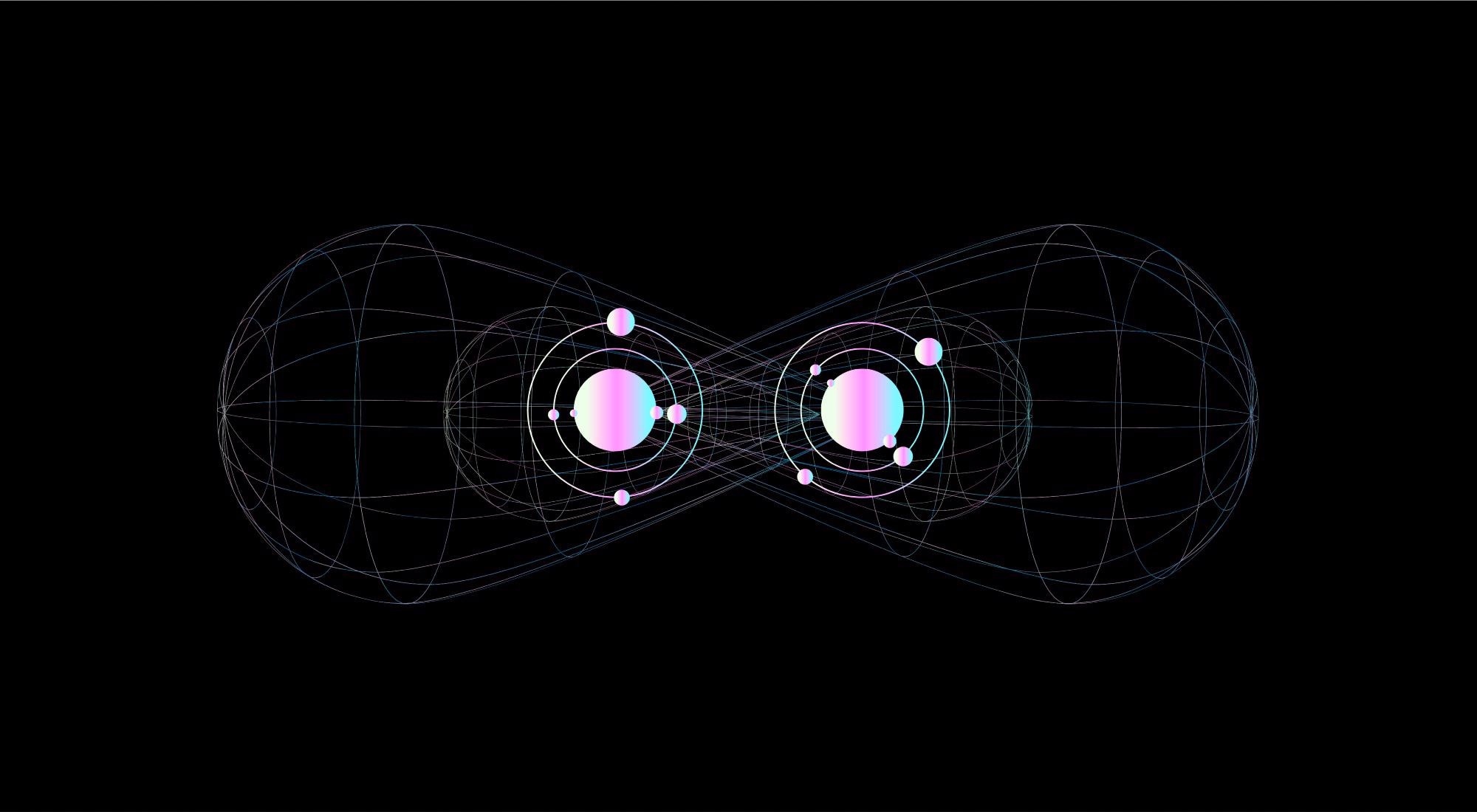Creating a pair of entangled photons in a crystal with eight possible paths could lead to a much more secure and robust form of quantum cryptology.

Image Credit: Yurchanka Siarhei/Shutterstock.com
A new type of quantum cryptology that relies on photons that can travel in eight different paths could make a more secure and faster form of quantum cryptography that can transmit a wealth of information.
Quantum cryptography is already one of the most important practical applications of quantum mechanics, first developed at the beginning of the 20th century.
The key principle behind quantum cryptology is entanglement, which Albert Einstein famously described as “spooky action at a distance.” When entangled particles are created, their qualities are intrinsically linked in such a way that if one is changed via an interaction, the other is instantly changed in a corresponding way.
The “spooky” element of this is that this instantaneous transformation happens no matter how far apart the particles are. So if the spin — an intrinsic magnetic property of a particle — of an electron is measured as ‘up’ the spin of its entangled partner instantly becomes ‘down’, even if those particles are at opposite sides of the Universe.
This is what troubled Einstein; his theory of special relativity hinges on the principle that nothing can travel faster than light, yet this information seems to be transmitted faster than this universal speed limit.
The great physicist believed that this indicated that quantum mechanics was an incomplete theory and that there must be ‘hidden variables’ in quantum systems, which we were yet to uncover.
Yet, in the century since its inception, this non-local aspect of quantum mechanics has been experimentally verified over and over again. This non-local “action at a distance” may be spooky, but it is real.
So, how can this idea be used to safely transmit information?
Quantum Cryptology: How Does It Work?
The idea of quantum cryptology hinges on creating a series of polarized pairs and photons to transmit data through fibre optic cable. The information is sent to two endpoints, each monitored by different people.
The photons are sent through a polarizer, that gives them opposite polarizations. They then travel to a series of beam splitters that ‘read’ each photons' polarization.
The monitors tells their counterpart what beam splitter was used for what photon, and this gives them a cryptographic key to decipher the information sent.
The reason this is so secure and is used to safely transmit information by banks and a wide range of industries, is if the photons are intercepted and “read” by an eavesdropper the photon’s state is changed.
This means that the monitors can tell if the information was intercepted, and there is no way for Eve to do this without being detected. In some quantum systems, the very act of intercepting the information could effectively destroy it.
The idea of the Atomic Institute of TU Wien professor, Marcus Huber, detailed in a paper published in Physical Review Letters, was to improve quantum cryptology by using a system in which photons can take more than two states, making the information even more difficult, maybe even impossible, for eavesdroppers to intercept.
Improving Quantum Cryptology
The research conducted by Huber and his team involved generating photon pairs with a laser in a special type of crystal. This can be done at one of eight points.
Depending on the point where this pair was created, each of the photons can move down one of eight paths. In fact, the photons could move down several paths simultaneously, something that would not be allowed in classical physics, but is allowed in quantum mechanics.

Conceptual Illustration of Quantum Entanglement. Image Credit: local_doctor/Shutterstock.com
This means that speaking in a strictly mathematical sense, the particle now exists in eight dimensions. When one of the photons is measured, its position is resolved and it is found on one of these eight paths. That means the person at point A knows what the person is measuring at point B.
Alice and Bob should always obtain the same result.
Entangled photons created this way can carry much more information than standard entangled photons which have only two potential states. Not only that, but this system is more robust, as entangled systems are easily destroyed by decoherence.
This is caused by interactions with other systems, often something as simple as a magnetic field or other particles. Thus, systems lose their quantum properties, including entanglement, easily.
However, the quantum properties of a system that exists in more dimensions are far less easy to destroy. This means Huber and his team’s system could stay entangled even in the presence of disturbances.
These disturbances can be further protected against decoherence by introducing sophisticated quantum error-correction mechanisms. These can be used to compensate for the influence of external perturbations.
There’s another benefit to this too: added security. There is no way of eavesdroppers obtaining the information passing between the two people monitoring the network without destroying the correlated polarization and making it abundantly clear interference has occurred.
As if the system wasn’t already impressive enough, Huber and his team suggest it could be further improved by adding more potential paths for the photons to travel down. More paths mean more dimensions, which means more protection against decoherence.
The only current issue the team found with this is that more paths make the end quantum state more difficult to read. This means when it comes to quantum cryptology, eight could be the magic number.
References and Further Reading
Hu. X-H., Zhang. C., Guo. Y., et al, [2021], ‘Pathways for Entanglement-Based Quantum Communication in the Face of High Noise,’ Physical Review Letters. https://journals.aps.org/prl/abstract/10.1103/PhysRevLett.127.110505
Disclaimer: The views expressed here are those of the author expressed in their private capacity and do not necessarily represent the views of AZoM.com Limited T/A AZoNetwork the owner and operator of this website. This disclaimer forms part of the Terms and conditions of use of this website.